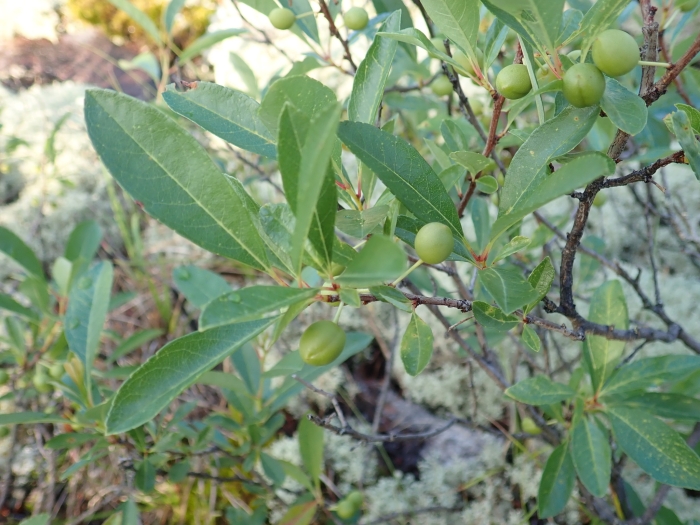Western Sand Cherry
(Prunus besseyi)
Western Sand Cherry (Prunus besseyi)
/
/

Rob Foster
CC BY 4.0




Estimated Native Range
Summary
The Western Sand Cherry is valued for its drought tolerance and its ability to thrive in poor, sandy soils, making it a suitable choice for xeriscaping and naturalistic plantings. It is often used in windbreaks, as a border plant, or for erosion control on slopes. This shrub requires full sun to part shade and prefers well-drained soils. While it is generally easy to maintain, it can be susceptible to pests such as aphids and diseases like black knot. Pruning is recommended to maintain its shape and promote healthy growth.CC BY-SA 4.0
Plant Description
- Plant Type: Shrub
- Height: 4-6 feet
- Width: 4-6 feet
- Growth Rate: Moderate
- Flower Color: White
- Flowering Season: Spring
- Leaf Retention: Deciduous
Growth Requirements
- Sun: Full Sun, Part Shade
- Water: Medium
- Drainage: Fast, Medium
Common Uses
Bee Garden, Bird Garden, Butterfly Garden, Drought Tolerant, Edible*Disclaimer: Easyscape's listed plant edibility is for informational use. Always verify the safety and proper identification of any plant before consumption., Erosion Control, Fire Resistant, Fragrant, Low Maintenance, Rabbit Resistant, Showy Flowers
Natural Habitat
Native to the dry, sandy soils of prairies and plains in the Central and Northern USA, and the Canadian Prairies
Other Names
Common Names: Western Sandcherry
Scientific Names: , Prunus besseyi, Prunus pumila var. besseyi, Prunus pumila subsp. besseyi, Cerasus pumila subsp. besseyi, Microcerasus pumila var. besseyi, Cerasus besseyi,
GBIF Accepted Name: Prunus pumila var. besseyi (L.H.Bailey) Gleason